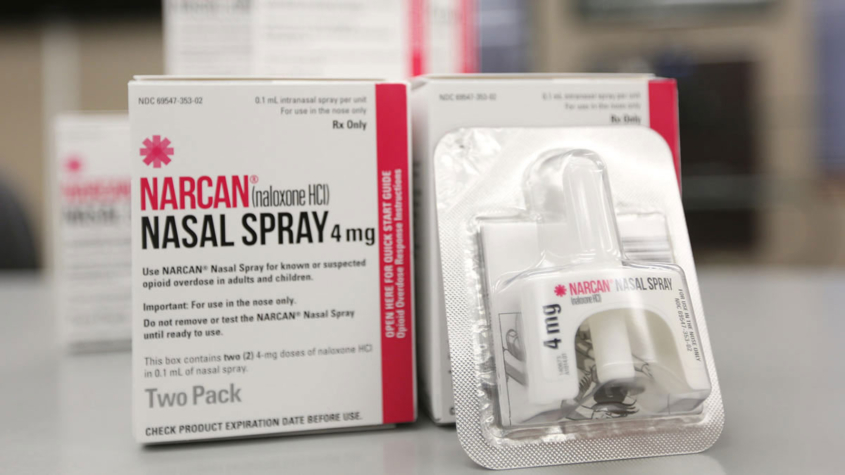Availability of overdose reversal drug expands across SOU campus
SOU’s four-year-old initiative to make naloxone rescue kits widely available has expanded to 24 fixed locations across campus plus three Campus Public Safety patrol vehicles, as opioid overdoses continue to rise throughout the region and state.
The rescue kits – with nasal spray containers of the overdose reversal medication naloxone, also known by the brand name Narcan – are located primarily in easy-to-find fire extinguisher and AED cabinets in most SOU buildings. They can be found in the Shasta, McLoughlin, Cox, Susanne Homes and Madrone residence halls; the Greensprings Complex; Ivy Hall in the Cascade Complex; the Digital Media Center; the Education/Psychology, Theatre, Music, Art, Computer Services and Science buildings; The Hawk; the Facilities, Maintenance and Planning building; the Raider Stadium Training Room; Stevenson Union; Hannon Library; Lithia Motors Pavillion; the Osher Lifelong Learning Institute at the Campbell Center; and Churchill, Britt and Taylor Halls.
The kits enable friends or passersby to save the lives of those experiencing opioid overdoses. Heroin and methadone, along with prescription pain medications such as hydrocodone, oxycodone, codeine, hydromorphone, morphine, oxymorphone, fentanyl and buprenorphine all are considered opioids.
Oregon saw a total of 1,114 opioid deaths from April 2021 to April 2022, the most recent year for which figures are available from Oregon Health & Science University. That’s an 18.5% increase over the previous year – a period in which overdose deaths nationwide increased by 6.9%. The Jackson County Medical Examiner’s Office reported 91 opioid overdose deaths in the 2021 calendar year, compared to 41 in 2020 and 16 in 2019.
Naloxone can legally be possessed and administered in Oregon, and was recently approved by the U.S. Food and Drug Administration for over-the-counter sales. It has no narcotic effects, and works by reversing opioid-induced depression of the respiratory and central nervous systems.
The nasal spray is easy to use, but familiarity with the procedures is advised. Self-training tools include a nine-minute video with details on how and when to administer naloxone, and a step-by-step description of the medication’s use.



